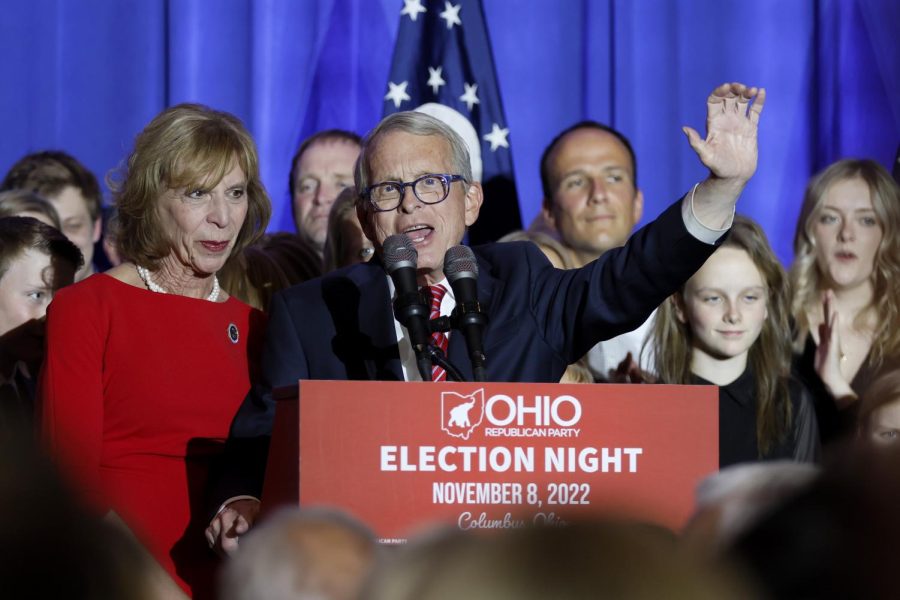DeWine wins re-election as Governor
Republican Ohio Gov. Mike DeWine, center, speaks during an election night watch party as his wife, Fran, stands next to him Tuesday, Nov. 8, 2022, in Columbus, Ohio.
Nov 13, 2022
Nan Whaley, the mayor of Dayton, lost the race for Governor of Ohio Tuesday night to Gov. Mike DeWine, the incumbent Republican governor since 2019. DeWine was expected to win the race, and he proved so by winning 62.8% of the vote compared to Whaley’s 37.2%.
Ohio has historically been considered a swing state with both parties typically able to carry the state, but in recent years, Ohio has become much more red, giving DeWine a clear advantage to win.
Whaley ran on a platform calling for a “total overhaul” of the Ohio system, arguing that “The same special interests and corrupt politicians have been in charge for 30 years as our state has fallen further behind,” according to Whaley’s campaign site.
Joining Whaley to run for Lieutenant Governor was Cheryl Stephens, a former Mayor and Councilmember of Cleveland Heights, who now works as the CEO of the East Akron Neighborhood Development Corporation, which aims to provide affordable housing and neighborhood revitalization. Whaley and Stephens together formed the first all-woman gubernatorial ticket in Ohio.
Ultimately, it was not enough, as DeWine’s incumbency proved to benefit his candidacy for re-election. DeWine ran on a strong economic platform, trying to persuade voters that they would continue to see economic growth based on his first term. DeWine’s platform also includes investing in local law enforcement in an effort to reduce crime in Ohio.
One reason for DeWine’s popularity and strong performance could be his COVID policies during the pandemic, as DeWine took an approach that looked like that of a blue state governor. With strong support for masking, testing and vaccinating, DeWine has been able to garner bipartisan support from more moderate voters.
For some, DeWine’s victory is indicative of a political shift in Ohio. For Colin Swearingen, professor of Political Science at John Carroll, “[DeWine’s] reelection alone does not solidify Ohio’s status as a Republican-friendly state; rather, it’s the sweep of statewide offices – from governor…to the state Supreme Court – that does this.”
“Moreover, JD Vance, a much weaker candidate than every other statewide Republican, still won by 6.5% over one of the best candidates the Democrats could have hoped for, a candidate who shattered all fundraising records. While this does not mean Ohio is among the most Republican states in the country, it does demonstrate how badly damaged the national and statewide Democratic Party brand is.”













